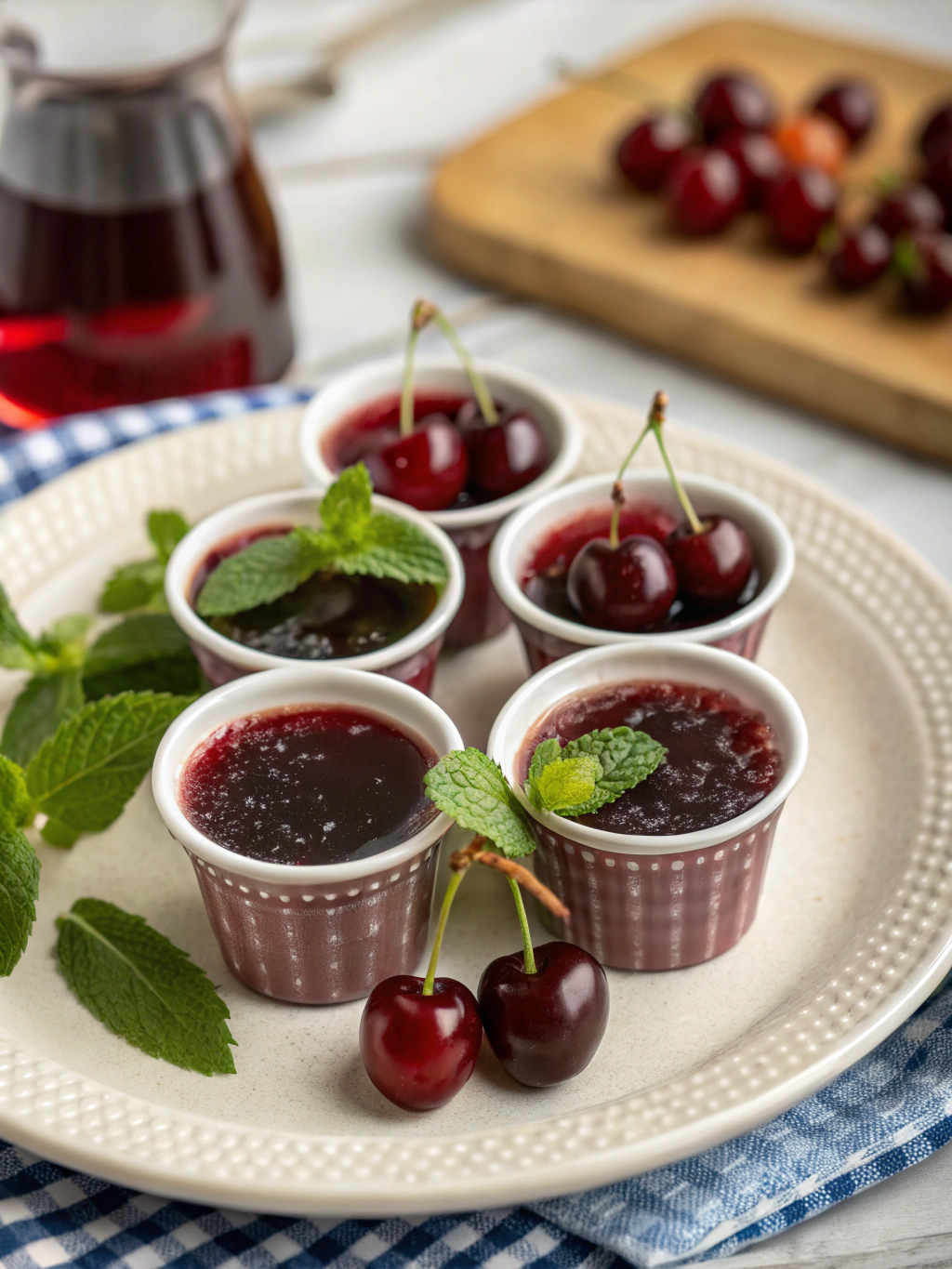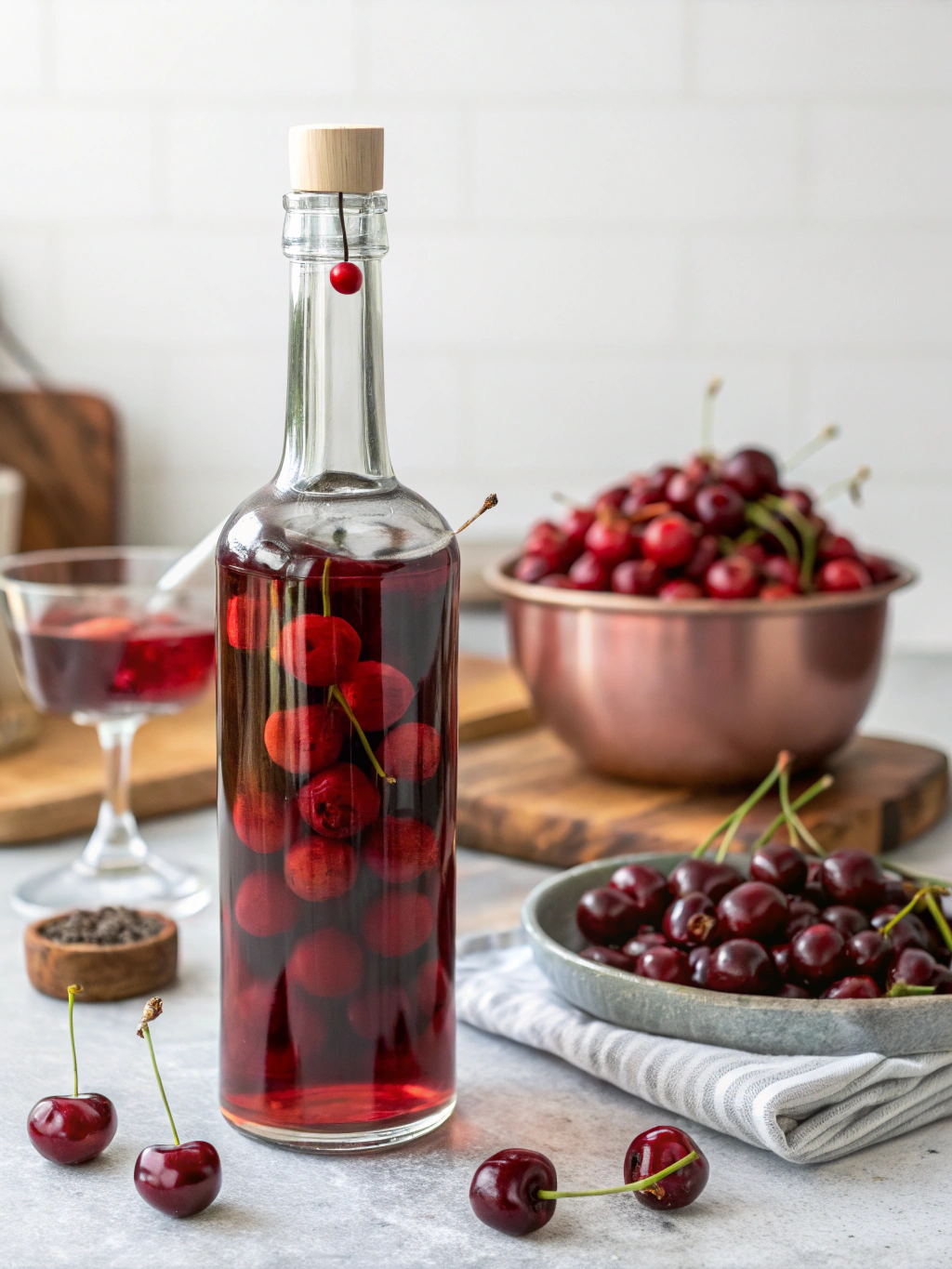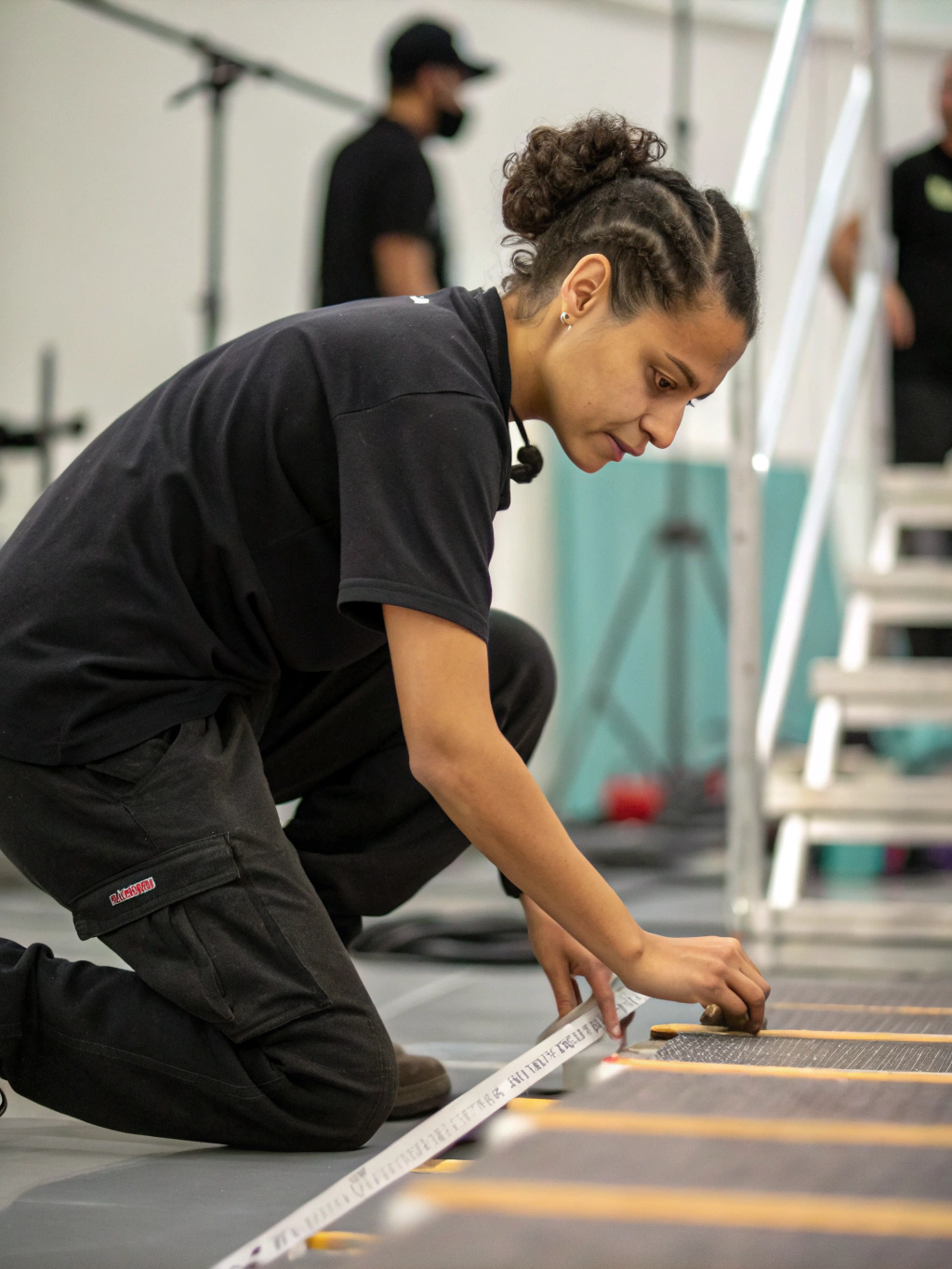
Did you know that over 8 million glasses of ginjinha portugal are consumed annually in Lisbon alone, making it the city's most beloved traditional liqueur? This enchanting cherry elixir has captured hearts for over 180 years, and among all varieties, ginjinha sem rival stands as the pinnacle of this Portuguese treasure. Whether you're strolling through Lisbon's historic Rossio Square or exploring the charming streets of Óbidos, this ruby-red liqueur beckons with its irresistible blend of sour cherries,
aguardente, and centuries-old tradition. Today, I'll guide you through creating your own authentic ginjinha sem rival at home, allowing you to experience the same magical flavors that have made this liqueur an integral part of Portuguese culture.
From its humble beginnings in a Lisbon monastery to becoming Portugal's unofficial national drink, ginjinha represents more than just a beverage—it's a cultural phenomenon that brings people together. The process of making this cherished liqueur combines traditional methods with precise timing, resulting in a perfectly balanced sweet and tart flavor profile that has remained unchanged for generations. Let's embark on this flavorful journey to create your very own bottle of liquid Portuguese sunshine.
Ingredients List

Creating authentic ginjinha sem rival requires carefully selected ingredients that honor the traditional recipe while allowing for personal touches:
Essential Ingredients:
- 2.2 pounds (1 kg) fresh sour cherries (ginja or Morello cherries)
- 3 cups (750ml) aguardente (Portuguese brandy, 40-50% ABV)
- 1.5 cups (300g) granulated white sugar
- 1 cinnamon stick (Ceylon cinnamon preferred)
- 4-5 whole cloves
- 1 vanilla pod (optional but recommended)
- Zest of 1 organic lemon (pesticide-free)
Ingredient Substitutions:
- Cherries: If fresh sour cherries aren't available, frozen Morello cherries work wonderfully—just thaw completely and pat dry
- Aguardente: High-quality vodka (minimum 40% ABV) or grappa can substitute, though the flavor profile will differ slightly
- Sugar: Raw cane sugar adds depth, or use honey for a more complex sweetness (reduce amount by 25%)
- Spices: Star anise or cardamom pods can create interesting flavor variations
The magic of ginjinha portugal lies in the quality of your cherries—their natural tartness balances the sweetness perfectly, creating that signature flavor that has made this liqueur legendary.
Timing
Preparation Time: 45 minutes (active work)
Maceration Period: 3-4 months (patience required!)
Filtering and Bottling: 30 minutes
Additional Aging: 1-2 months (optional but recommended)
Total Time: 4-6 months from start to first sip
Compared to other fruit liqueurs, ginjinha sem rival requires 30% more maceration time than typical recipes, but this extended period is crucial for developing its characteristic deep ruby color and complex flavor profile. The wait is absolutely worth it—Portuguese families often start batches in summer to enjoy during winter celebrations.
Step-by-Step Instructions
Step 1: Preparing the Cherries

Begin your ginjinha sem rival journey by thoroughly washing the cherries in cold water. Pat them completely dry with clean kitchen towels—any excess moisture can dilute your liqueur. Here's a professional tip: leave the pits in! The pits contribute a subtle almond-like note that's essential to authentic ginjinha portugal. However, gently prick each cherry 2-3 times with a sterilized needle to help release their juices during maceration.
Step 2: Creating the Infusion Base
Select a large glass jar with an airtight lid (minimum 2-liter capacity). Layer your pricked cherries in the jar, adding the cinnamon stick, cloves, and split vanilla pod between layers. This layering technique ensures even flavor distribution throughout the maceration process. Pour the aguardente slowly over the cherries, ensuring they're completely submerged. The alcohol should cover the fruit by at least 2 inches.
Step 3: The Sugar Syrup Method
Traditional ginjinha sem rival makers add sugar directly, but creating a simple syrup ensures better integration. Combine sugar with ½ cup water in a saucepan, heating gently until dissolved. Cool completely before adding to your cherry mixture. This method prevents crystallization and creates a smoother final product.
Step 4: The Maceration Magic
Seal your jar tightly and store in a cool, dark place. This is where patience becomes your greatest ingredient. Gently swirl the jar every 3-4 days for the first month, then weekly thereafter. You'll notice the clear spirit transforming into a gorgeous ruby liquid—this color development indicates proper extraction of the cherry compounds.
Step 5: Filtering Perfection
After 3-4 months, your ginjinha sem rival is ready for filtering. Line a fine-mesh strainer with cheesecloth and carefully strain the liquid, pressing gently on the cherries to extract maximum flavor. Filter twice more through coffee filters for crystal clarity. Don't discard those boozy cherries—they're delicious over ice cream!
Step 6: Bottling and Final Aging
Transfer your filtered liqueur into sterilized dark glass bottles. While it's drinkable immediately, allowing it to age another 1-2 months develops even more complexity. Store bottles upright in a cool, dark place. The flavor will continue to mellow and integrate over time.
Nutritional Information
Per 1.5 oz (45ml) serving:
- Calories: 165
- Carbohydrates: 18g
- Sugars: 17g
- Alcohol: 12g (approximately 25-30% ABV)
- Vitamin C: 3mg (from cherries)
- Antioxidants: Rich in anthocyanins and quercetin
Interestingly, ginjinha portugal contains 40% more antioxidants than regular cherry juice due to the alcohol extraction process, which pulls beneficial compounds from both the fruit and pits. However, moderation is key—traditional Portuguese serving sizes are intentionally small to savor the flavor without overindulgence.
Healthier Alternatives for the Recipe
Transform your ginjinha sem rival into a lighter version without sacrificing its authentic character:
Sugar Reduction Options:
- Replace 50% of sugar with stevia or erythritol for a diabetic-friendly version
- Use raw honey (reduce quantity by 30%) for additional health benefits
- Add fresh cherry juice concentrate for natural sweetness
Lower Alcohol Variations:
- Dilute with sparkling water for a refreshing spritzer (1:2 ratio)
- Create a ginjinha reduction sauce for desserts (alcohol evaporates during cooking)
- Mix with kombucha for a probiotic cocktail
Enhanced Nutrition Additions:
- Include dried goji berries during maceration for extra antioxidants
- Add a piece of fresh ginger for digestive benefits
- Incorporate organic rose hips for vitamin C boost
Serving Suggestions
Traditional Portuguese establishments serve ginjinha sem rival in distinctive ways that enhance the experience:
Classic Presentations:
- Serve in chocolate cups (copinhos de chocolate) that you eat after drinking
- Offer "com elas" (with them) - including a few macerated cherries in each glass
- Pour into small cordial glasses, slightly chilled but never over ice
Modern Twists:
- Create a Ginjinha Sour with lemon juice and egg white
- Drizzle over vanilla gelato for an adult dessert
- Mix with prosecco for a Portuguese take on Kir Royale
- Use as a glaze for roasted duck or pork
Pairing Perfection:
- Serve alongside Portuguese pastéis de nata
- Pair with dark chocolate (70% cacao or higher)
- Accompany with aged Portuguese cheeses
- Offer with salted almonds or cashews
Common Mistakes to Avoid
Learning from others' experiences ensures your ginjinha sem rival achieves perfection:
Critical Errors:
- Using sweet cherries: This completely alters the flavor balance—sour cherries are non-negotiable
- Rushing the process: Opening the jar frequently introduces oxygen and bacteria
- Over-sweetening: Remember, flavors intensify during aging
- Improper storage: Direct sunlight degrades both color and flavor
- Removing pits: You'll miss the crucial almond undertones
Pro Solutions:
- Test sugar levels after 2 months—you can always add more
- Use only sterilized equipment to prevent contamination
- Keep detailed notes for recipe refinement
- Filter multiple times for professional clarity
- Be patient—good things come to those who wait
Storing Tips for the Recipe
Proper storage ensures your ginjinha sem rival maintains its quality for years:
Optimal Storage Conditions:
- Temperature: 55-65°F (13-18°C) - consistent is key
- Light: Complete darkness or amber bottles
- Position: Upright to minimize cork contact
- Humidity: 50-70% to preserve cork integrity
Longevity Guidelines:
- Unopened bottles: 5-10 years (flavor continues developing)
- Opened bottles: 1-2 years (refrigerate after opening)
- Macerated cherries: 6 months refrigerated in airtight container
- Frozen option: Freeze in ice cube trays for portion control
Quality Indicators:
- Color fading suggests oxidation
- Crystallization means temperature fluctuations
- Cloudiness indicates potential contamination
- Sediment is normal—just filter before serving
Conclusion
Creating your own ginjinha sem rival connects you to centuries of Portuguese tradition while allowing personal creativity to shine. This isn't just about making liqueur—it's about crafting liquid memories that will enhance gatherings and create new traditions. The months of patient waiting transform simple ingredients into something truly magical, just as generations of Portuguese families have discovered.
The beauty of ginjinha portugal lies not only in its exquisite taste but in its ability to bring people together. Whether you're serving it at holiday celebrations, gifting bottles to friends, or simply enjoying a quiet evening sip, you're participating in a tradition that has warmed Portuguese hearts since the 1840s.
Ready to begin your ginjinha journey? Start today, and in a few months, you'll be raising a glass of your very own ginjinha sem rival. Don't forget to share your creation on social media using #HomemadeGinjinha—I'd love to see your unique variations! Saúde!
FAQs
Q: Can I make ginjinha without alcohol?
A: While traditional ginjinha sem rival requires alcohol for proper extraction and preservation, you can create a cherry syrup using the same spices. Simmer cherries with sugar and spices, then strain. It won't have the same complexity but offers a family-friendly alternative.
Q: Why is my ginjinha cloudy?
A: Cloudiness usually results from pectin in the cherries or incomplete filtering. Try cold-filtering (chill the liqueur first) or add a few drops of liquid pectin enzyme before final filtering. Some cloudiness is acceptable in homemade versions.
Q: Can I speed up the maceration process?
A: While tempting, shortcuts compromise quality. Some makers use gentle heat (sous vide at 140°F for 2-3 hours) to jumpstart extraction, but traditional room-temperature maceration produces superior results. The wait builds anticipation!
Q: What's the difference between ginjinha and cherry brandy?
A: Ginjinha portugal uses sour cherries and specific Portuguese spirits, creating a unique flavor profile. Cherry brandy often uses sweet cherries and different base spirits. The Portuguese version is typically less sweet with more complex spice notes.
Q: Can I reuse the macerated cherries?
A: Absolutely! These boozy cherries are culinary gold. Use them in Black Forest cake, blend into smoothies, muddle for cocktails, or simply enjoy over ice cream. They'll keep refrigerated for up to 6 months.






